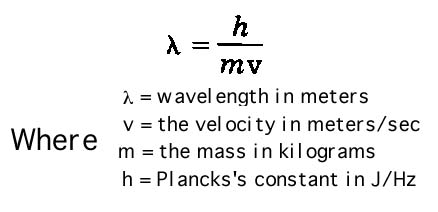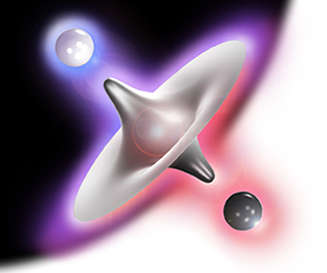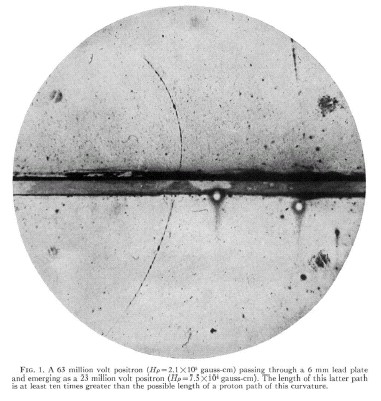Warning: you might learn the most strange yet most awesome way to perceive our life.
"there's an EPIC VIDEO IF YOU DON'T WANT TO READ ;)"
The future of science and the fate of humanity resides on Quantum Logic!
Quantum theory evolved as a new branch of theoretical physics during the first few decades of the 20th century in an endeavour to understand the fundamental properties of matter. It began with the study of the interactions of matter and radiation. Certain radiation effects could neither be explained by classical mechanics, nor by the theory of electromagnetism. In particular, physicists were puzzled by the nature of light. Peculiar lines in the spectrum of sunlight had been discovered earlier by Joseph von Fraunhofer (1787-1826). These spectral lines were then systematically catalogued for various substances, yet nobody could explain why the spectral lines are there and why they would differ for each substance. It took about one hundred years, until a plausible explanation was supplied by quantum theory.
Quantum theory is about the nature of matter.
In contrast to Einstein's Relativity, which is about the largest things in the universe, quantum theory deals with the tiniest things we know, the particles that atoms are made of, which we call "subatomic" particles. In contrast to Relativity, quantum theory was not the work of one individual, but the collaborative effort of some of the most brilliant physicists of the 20th century, among them Niels Bohr, Erwin Schrödinger, Wolfgang Pauli, and Max Born. Two names clearly stand out: Max Planck (1858-1947) and Werner Heisenberg (1901-1976). Planck is recognised as the originator of the quantum theory, while Heisenberg formulated one of the most eminent laws of quantum theory, the Uncertainty Principle, which is occasionally also referred to as the principle of indeterminacy.Planck's constant: Energy is not continuous.
Around 1900, Max Planck from the University of Kiel concerned himself with observations of the radiation of heated materials. He attempted to draw conclusions from the radiation to the radiating atom. On basis of empirical data, he developed a new formula which later showed remarkable agreement with accurate measurements of the spectrum of heat radiation. The result of this formula was so that energy is always emitted or absorbed in discrete units, which he called quanta. Planck developed his quantum theory further and derived a universal constant, which came to be known as Planck's constant. The resulting law states that the energy of each quantum is equal to the frequency of the radiation multiplied by the universal constant: E=f*h, where h is 6.63 * 10E-34 Js. The discovery of quanta revolutionised physics, because it contradicted conventional ideas about the nature of radiation and energy.
The atom model of Bohr.
To understand the gist of the quantum view of matter, we have to go back to the 19th century's predominant model of matter. Scientists at the time believed -like the Greek atomists- that matter is composed of indivisible, solid atoms, until Rutherford proved otherwise.
The British physicist Ernest Rutherford (1871-1937) demonstrated
experimentally that the atom is not solid as previously assumed, but
that it has an internal structure consisting of a small, dense nucleus
about which electrons circle in orbits.
 Niels Bohr (1885-1962) refined Rutherford's model by introducing
different orbits in which electrons spin around the nucleus. This model
is still used in chemistry. Elements are distinguished by their "atomic
number", which specifies the number of protons in the nucleus of the
atom. Electrons are held in their orbits through the electrical
attraction between the positive nucleus and the negative electron. Bohr
argued that each electron has a certain fixed amount of energy, which
corresponds to its fixed orbit. Therefore, when an electron absorbs
energy, it jumps to the next higher orbit rather than moving
continuously between orbits. The characteristic of electrons having
fixed energy quantities (quanta) is also known as the quantum theory of
the atom.
Niels Bohr (1885-1962) refined Rutherford's model by introducing
different orbits in which electrons spin around the nucleus. This model
is still used in chemistry. Elements are distinguished by their "atomic
number", which specifies the number of protons in the nucleus of the
atom. Electrons are held in their orbits through the electrical
attraction between the positive nucleus and the negative electron. Bohr
argued that each electron has a certain fixed amount of energy, which
corresponds to its fixed orbit. Therefore, when an electron absorbs
energy, it jumps to the next higher orbit rather than moving
continuously between orbits. The characteristic of electrons having
fixed energy quantities (quanta) is also known as the quantum theory of
the atom.
The above model bears a striking similarity with the Newtonian
model of our solar system. Electrons revolve around the nucleus, just as
planets revolve around the Sun. It is therefore not surprising that
physicists tried to apply classical mechanics to the atomic structure.
The forces between nucleus and electrons were equated with the
gravitational forces between celestial bodies. This idea worked quite
well for the hydrogen atom, the simplest of all elements, but it failed
to explain the behaviour of more complex atoms. Niels Bohr (1885-1962) refined Rutherford's model by introducing
different orbits in which electrons spin around the nucleus. This model
is still used in chemistry. Elements are distinguished by their "atomic
number", which specifies the number of protons in the nucleus of the
atom. Electrons are held in their orbits through the electrical
attraction between the positive nucleus and the negative electron. Bohr
argued that each electron has a certain fixed amount of energy, which
corresponds to its fixed orbit. Therefore, when an electron absorbs
energy, it jumps to the next higher orbit rather than moving
continuously between orbits. The characteristic of electrons having
fixed energy quantities (quanta) is also known as the quantum theory of
the atom.
Niels Bohr (1885-1962) refined Rutherford's model by introducing
different orbits in which electrons spin around the nucleus. This model
is still used in chemistry. Elements are distinguished by their "atomic
number", which specifies the number of protons in the nucleus of the
atom. Electrons are held in their orbits through the electrical
attraction between the positive nucleus and the negative electron. Bohr
argued that each electron has a certain fixed amount of energy, which
corresponds to its fixed orbit. Therefore, when an electron absorbs
energy, it jumps to the next higher orbit rather than moving
continuously between orbits. The characteristic of electrons having
fixed energy quantities (quanta) is also known as the quantum theory of
the atom.
If matter is not infinitely divisible, why should energy be?
The idea that energy could be emitted or absorbed only in discrete energy quanta seemed odd, since it could not be fitted into the traditional framework of physics. The quantum behaviour of electrons in atoms contradicted not only classical mechanics, but also Maxwell's electromagnetic theory, which required it to radiate away energy while orbiting in a quantum energy state. Even Max Planck, who was a conservative man, initially doubted his own discovery. The traditional view was that energy flows in a continuum like a smooth, unbroken stream of water. That there should be gaps between the discrete entities of energy seemed wholly unreasonable. In fact, Planck's idea only gained credence when Einstein used it in 1905 to explain the photoelectric effect. - After all, if matter is not infinitely divisible, why should energy be?
In the course of time, physicists descended deeper into the realm of the atom. Bohr's atom model was remarkably successful in describing the spectrum of the hydrogen atom by using Planck's formula to relate different energy levels of electrons to different frequencies of light radiation. Unfortunately, it did not work well for more complex atoms, and so a more sophisticated theory had to be developed. The problem seemed to be rooted in the assumption that an electron rotates around the nucleus like a massive object revolves around a centre of gravity. De Broglie, Schrödinger, and Heisenberg showed that classical mechanics had to be abandoned in order to describe the subatomic world adequately. In an inference not less dramatic than Planck's discovery of quanta, they stated that particles don't really have a trajectory or an orbit, much less do they behave like a ball that is shot through a corridor or is whirled around on the end of a cord.
The wave-particle duality.
Just as light is thought to have a dual nature, sometimes showing the characteristic of a wave, and sometimes that of a particle (photon), quantum theory attributes a similar dual wave-particle nature to subatomic particles. Electrons that orbit around the nucleus interact with each other by showing interference patterns, not unlike those of wave interference. If the velocity of the electron is thought of as its wavelength, the crests of neighbouring electron waves amplify or cancel each other, thereby creating a pattern that corresponds to Bohr's allowed orbits. Bohr's model of the atom was superseded by the probability cloud
model that describes physical reality better.
The orbital clouds are mathematical descriptions of where the
electrons in an atom are most likely to be found, which means the model
shows the spatial distribution of electrons. The (simplified) picture to
the left shows electron probability clouds in a water molecule.
Bohr's model of the atom was superseded by the probability cloud
model that describes physical reality better.
The orbital clouds are mathematical descriptions of where the
electrons in an atom are most likely to be found, which means the model
shows the spatial distribution of electrons. The (simplified) picture to
the left shows electron probability clouds in a water molecule.Even cloud models are only approximations. The computation of the actual distribution of electrons in an atom is extremely laborious and the result is too complicated to be illustrated in a single layer 3D model.
About misbehaved electrons, or: the probability cloud model.
The nature of electrons seems odd. Seemingly they exist in different places at different points in time, but it is impossible to say where the electron will be at a given time. At time t1 it is at point A, then at time t2 it is at point B, yet without moving from A to B. It seems to appear in different places without describing a trajectory. Therefore, even if t1 and A can be pinpointed, it is impossible to derive t2 and B from this measurement. In other words: There seems to be no causal relation between any two positions. The concept of causality cannot be applied to what is observed. In case of the electrons of an atom, the closest we can get to describing the electron's position is by giving a number for the probability of it being at a particular place. Moreover, particles have other "disturbing" properties: They have a tendency to decay into other particles or into energy, and sometimes -under special circumstances- they merge to form new particles. They do so after indeterminate time spans. Although we can make statistical assertions about a particle's lifetime, it is impossible to predict the fate of an individual particle.
What does quantum physics say about the universe?
Can we derive any new knowledge about the universe from quantum physics? After all, the entire universe is composed of an unimaginable large number of matter and energy. It seems to be of great importance to understand quantum theory properly in view of the large-scale structure of the cosmos. For example, an interesting question in this context is why the observable matter in the universe is packed together in galaxies and is not evenly distributed throughout space. Could it have to do with the quantum characteristics of energy? Are quantum effects responsible for matter forming discrete entities, instead of spreading out evenly during the birth of the universe? The answer to this question is still being debated.If cosmological conclusions seem laboured, we might be able to derive philosophical insights from quantum physics. At least Fritjof Capra thinks this is possible when he describes the parallels between modern physics and ancient Eastern philosophy in his book The Tao of Physics. He holds that in a way, the essence of modern physics is comparable to the teachings of the ancient Eastern philosophies, such as the Chinese Tao Te Ching, the Indian Upanishads, or the Buddhist Sutras. Eastern philosophies agree in the point that ultimate reality is indescribable and unapproachable, not only in terms of common language, but also in the language of mathematics. That is, science and mathematics must fail at some stage in describing ultimate reality. We see this exemplified in the Uncertainty Principle, which is elucidated in the following section.
Molecules and atoms cannot be split into independent units. All parts interact at all levels.
 The oriental scriptures agree in the point that all observable and
describable realities are manifestations of the same underlying
"divine" principle. Although many phenomena of the observable world are
seemingly unrelated, they all go back to the same source. Things are
intertwined and interdependent to an unfathomable degree, just as the
particles in an atom are. Although the electrons in an atom can be
thought of as individual particles, they are not really individual
particles, because of the complicated wave relations that exist between
them. Hence, the electron cloud model describes the atomic structure
more adequately. The sum of electrons in an atom cannot be separated
from its nucleus, which has a compound structure itself and can neither
be regarded a separate entity. Thus, in the multiplicity of things there
is unity. Matter is many things and one thing at the same time.
The oriental scriptures agree in the point that all observable and
describable realities are manifestations of the same underlying
"divine" principle. Although many phenomena of the observable world are
seemingly unrelated, they all go back to the same source. Things are
intertwined and interdependent to an unfathomable degree, just as the
particles in an atom are. Although the electrons in an atom can be
thought of as individual particles, they are not really individual
particles, because of the complicated wave relations that exist between
them. Hence, the electron cloud model describes the atomic structure
more adequately. The sum of electrons in an atom cannot be separated
from its nucleus, which has a compound structure itself and can neither
be regarded a separate entity. Thus, in the multiplicity of things there
is unity. Matter is many things and one thing at the same time.The Eastern scriptures say that no statement about the world is ultimately valid ("The Tao that can be told is not the eternal Tao." Tao Te Ching, Verse 1), since not even the most elaborate language is capable of rendering a perfect model of the universe. Science is often compared to a tree that branches out into many directions. The disposition of physics is that it follows the tree upward to its branches and leaves, while meta-physics follows it down to the root. Whether the branches of knowledge stretch out indefinitely is still a matter of debate. However, it appears that most scientific discoveries do not only answer questions, but also raise new ones.
The German philosopher, FriedrichHegel formulated an idea at the beginning of the 19th century that describes this process. He proposed the dialectic triad of thesis, antithesis, and synthesis, in which an idea (thesis) always contains incompleteness and thus yields a conflicting idea (antithesis). A third point of view (synthesis) arises, which overcomes the conflict by reconciling the truth contained in both, thesis and antithesis, at a higher level of understanding. The synthesis then becomes a new thesis, generates another antithesis, and the process starts over. In the next section, we shall see how 20th century physics embodies Hegel's dialectical principle. We will also take a close look at the philosophical implications of Heisenberg's Uncertainty Principle.






0 Comments::
Post a Comment
Hope you enjoyed :)